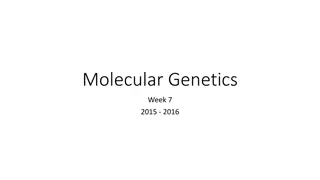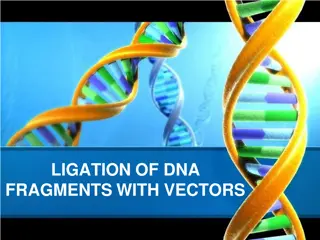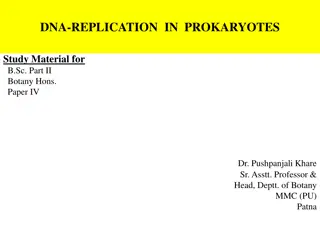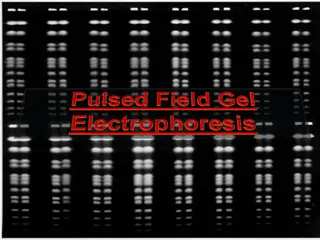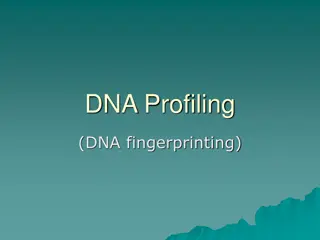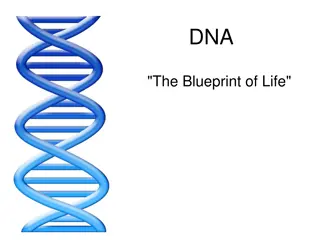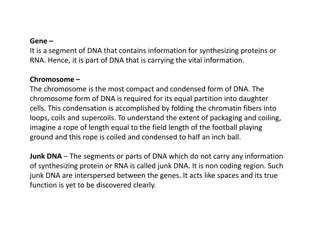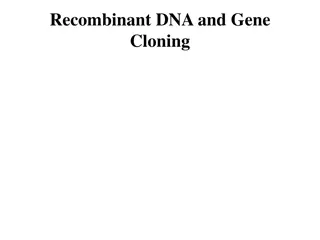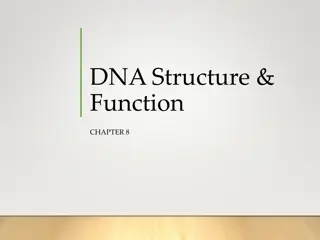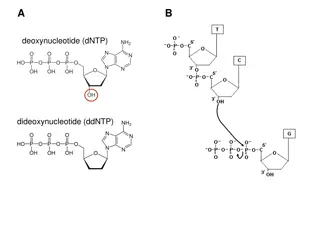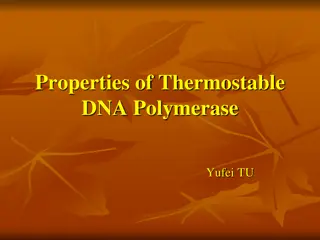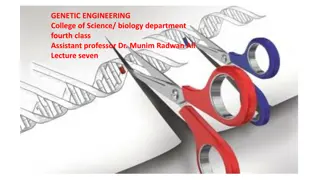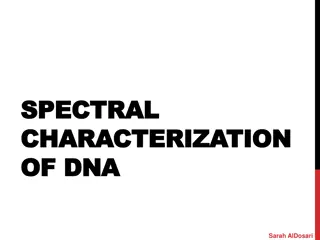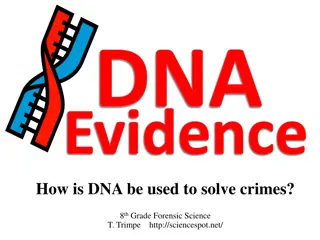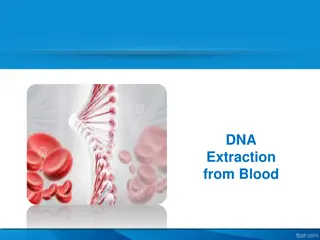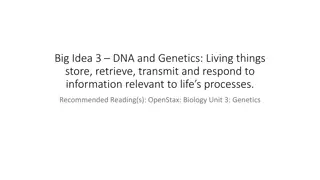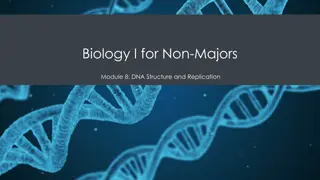The Structure of DNA: Blueprint of Life & Importance
DNA, often termed the blueprint of life, holds crucial instructions for protein synthesis in cells. Studying DNA reveals its central role in life, from medical advancements to enhancing food crops. Discover more about chromosomes, the double helix structure, nucleotides, and the significance of four nitrogenous bases in DNA.
Download Presentation

Please find below an Image/Link to download the presentation.
The content on the website is provided AS IS for your information and personal use only. It may not be sold, licensed, or shared on other websites without obtaining consent from the author.If you encounter any issues during the download, it is possible that the publisher has removed the file from their server.
You are allowed to download the files provided on this website for personal or commercial use, subject to the condition that they are used lawfully. All files are the property of their respective owners.
The content on the website is provided AS IS for your information and personal use only. It may not be sold, licensed, or shared on other websites without obtaining consent from the author.
E N D
Presentation Transcript
Welcome Today s agenda: Take notes, Complete activity.
The Structure of DNA The Structure of DNA Mr. Coleman Biology
DNA DNA is often called the blueprint of life. In simple terms, DNA contains the instructions for making proteins within the cell.
Why do we study DNA? We study DNA for many reasons, e.g., its central importance to all life on Earth, medical benefits such as cures for diseases, better food crops.
Chromosomes and DNA Our genes are on our chromosomes. Chromosomes are made up of a chemical called DNA.
The Shape of the Molecule DNA is a very long polymer. The basic shape is like a twisted ladder or zipper. This is called a double helix.
The Double Helix Molecule The DNA double helix has two strands twisted together. (In the rest of this unit we will look at the structure of one strand.)
One Strand of DNA The backbone of the molecule is alternating phosphate and deoxyribose, a sugar, parts. The teeth are nitrogenous bases. phosphate deoxyribose bases
Nucleotides ATP O O -P O O One deoxyribose together with its phosphate and base make a nucleotide. O O -P O O O O -P O O Nitrogenous base O Phosphate C C C Deoxyribose ribose O
One Strand of DNA nucleotide One strand of DNA is a polymer of nucleotides. One strand of DNA has many millions of nucleotides.
Four nitrogenous bases DNA has four different bases: Cytosine C Thymine T Adenine A Guanine G
Two Kinds of Bases in DNA N Pyrimidines are single ring bases. N C O C C N C Purines are double ring bases. N N C C C N C N C N
Thymine and Cytosine are pyrimidines Thymine and cytosine each have one ring of carbon and nitrogen atoms. N O N C N C O C C O C C C N C N C cytosine thymine
Adenine and Guanine are purines Adenine and guanine each have two rings of carbon and nitrogen atoms. O N N N C C N C C C C N N N C N C C Guanine Adenine C N N
Two Stranded DNA Remember, DNA has two strands that fit together something like a zipper. The teeth are the nitrogenous bases but why do they stick together?
Hydrogen Bonds N The bases attract each other because of hydrogen bonds. Hydrogen bonds are weak but there are millions and millions of them in a single molecule of DNA. (The bonds between cytosine and guanine are shown here.) C N N C C C O N N C N C N O C C C N
Hydrogen Bonds, cont. O N When making hydrogen bonds, cytosine always pairs up with guanine, And adenine always pairs up with thymine. (Adenine and thymine are shown here.) C O C C C N C
Important: Adenine and Thymine always join together A T Cytosine and Guanine always join together C G
DNA by the numbers Each cell has about 2 m of DNA. The average human has 75 trillion cells. The average human has enough DNA to go from the earth to the sun more than 400 times. DNA has a diameter of only 0.000000002 m. The earth is 150 billion m or 93 million miles from the sun.
This powerpoint was kindly donated to www.worldofteaching.com http://www.worldofteaching.com is home to over a thousand powerpoints submitted by teachers. This is a completely free site and requires no registration. Please visit and I hope it will help in your teaching.



